Health
The Sugar That Killed My Mother: A Generation Drowning in Cheap Drinks, Cigarettes and Lies
Published
10 months agoon
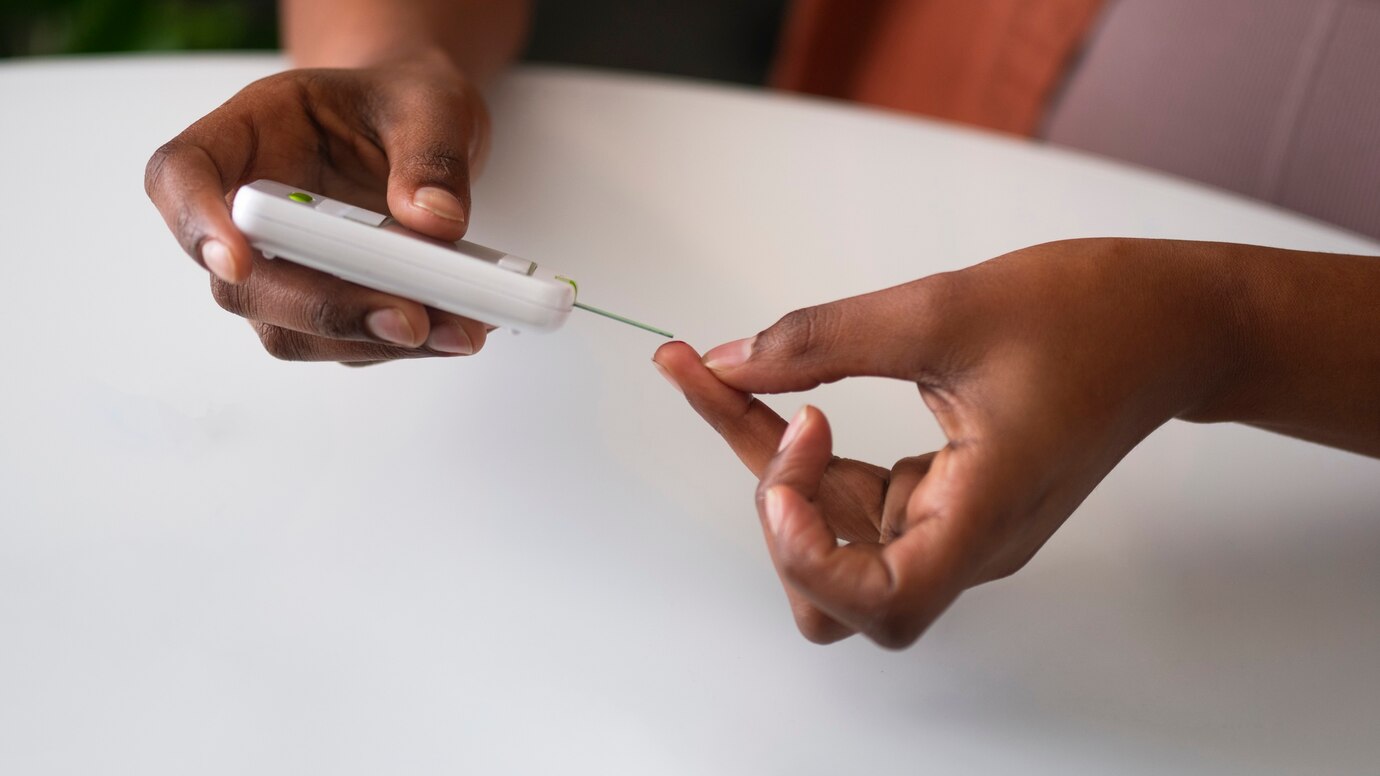
On October 15, 2021, the beep of a glucose monitor flatlined in our living room. My mother, Rebecca Nabiteeko (R.I.P.), took her last labored breath as her veins, swollen, burning, and numb, finally surrendered to a decade-long siege by diabetes. Her final days were a cruel liturgy: mornings began with insulin injections, and nights ended with prayers to a God who never answered. “Nsaba Yezu, mpone obulwadde bwa sukaali,” she prayed for deliverance from the sugar sickness. The same sickness that caused numbness of her feet, then her sleep, and finally her life. I miss her.
In our little cramped Kyebando-Kisalosalo home, medication such as pregabalin, Metformin, and Insulin Mixtard—became part of the day’s meals and everyday companions as relatives. We memorized their shapes: the amber vials crowding the dining table, the syringes tucked like shrapnel in drawer corners. Her body was a battleground. Her faith, a fragile ceasefire.
Her story is not unique. It is now becoming every household’s and a Ugandan story. Our country is under attack! While HIV, cholera, and malaria dominate headlines, a quieter killer stalks Uganda: non-communicable diseases (NCDs) like diabetes, hypertension, and cancer now claim 1 in 3 lives, eclipsing infections as the nation’s grim reaper.
“Our clinics are grappling with constant drug stockouts. For hypertension, diabetes, and asthma medications, funding covers just 2% of the actual needs,” reveals Dr. Freddie Ssengooba, a professor of health economics at Makerere University School of Public Health (MakSPH).
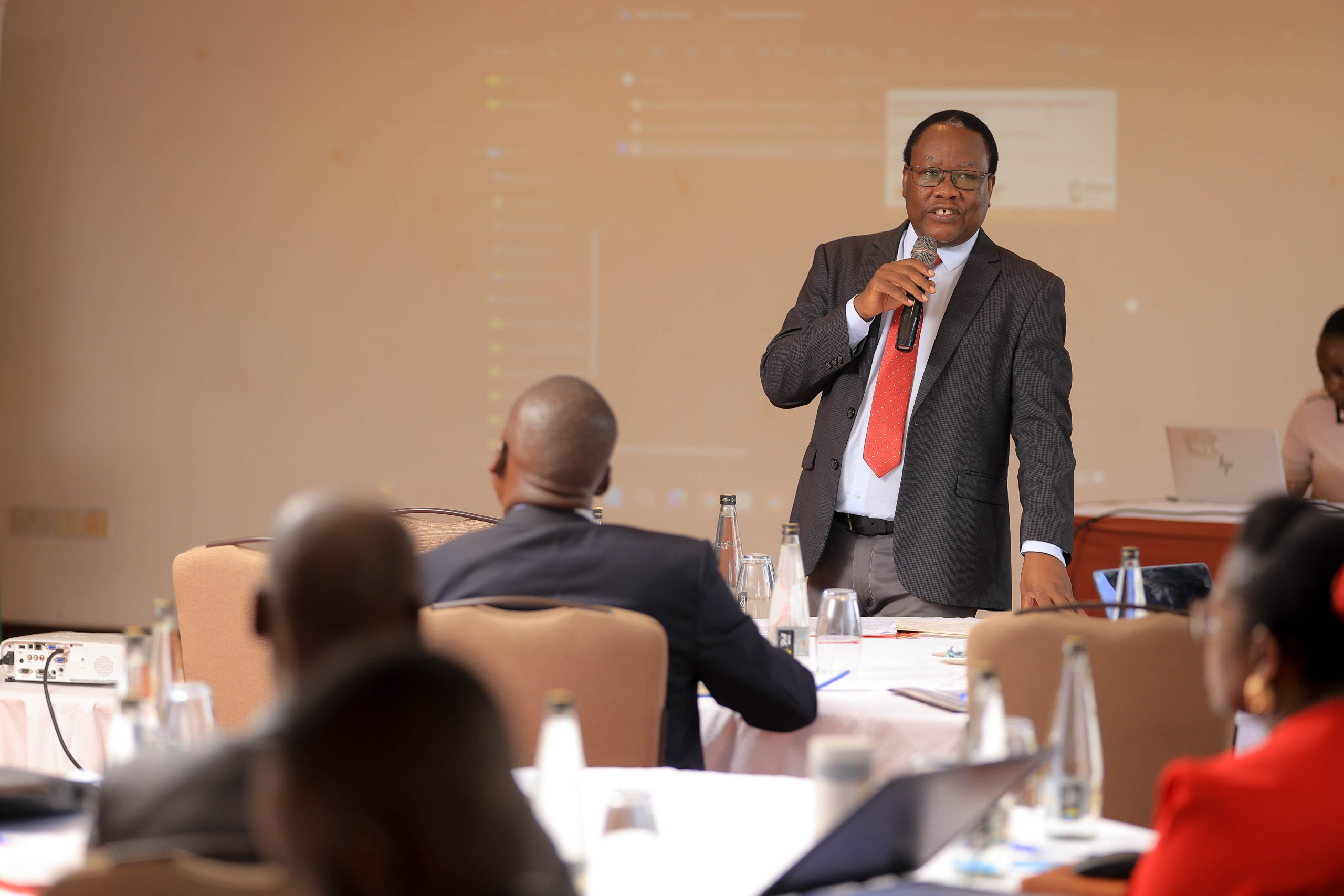
In one of the Health Policy Advisory Committee (HIPAC) meetings of Uganda’s Ministry of Health, where key stakeholders gather, a concerning reality about medicine availability was shared.
In schools, teenagers trade 500-shilling cigarettes like sweets. In markets, soda and unregulated sweetened juices flow cheaper than clean water. Uganda’s health system, already strained by several public health issues, is buckling under the NCD surge. “80% of the early 335 COVID-19 deaths in Uganda had NCD comorbidities as an underlying condition,” stated Dr. Eric Segujja, a public health systems researcher, while coronary heart disease, once rare in Africa, now claims 12% of Uganda’s disease burden.
This is a plague of policy, profit, and paralysis, a war where lobbyists outgun public health advocates and sugar drowns out science. My mother didn’t just die of diabetes. She died in a system that incentivizes manufactured epidemics while pushing back on public health responses.
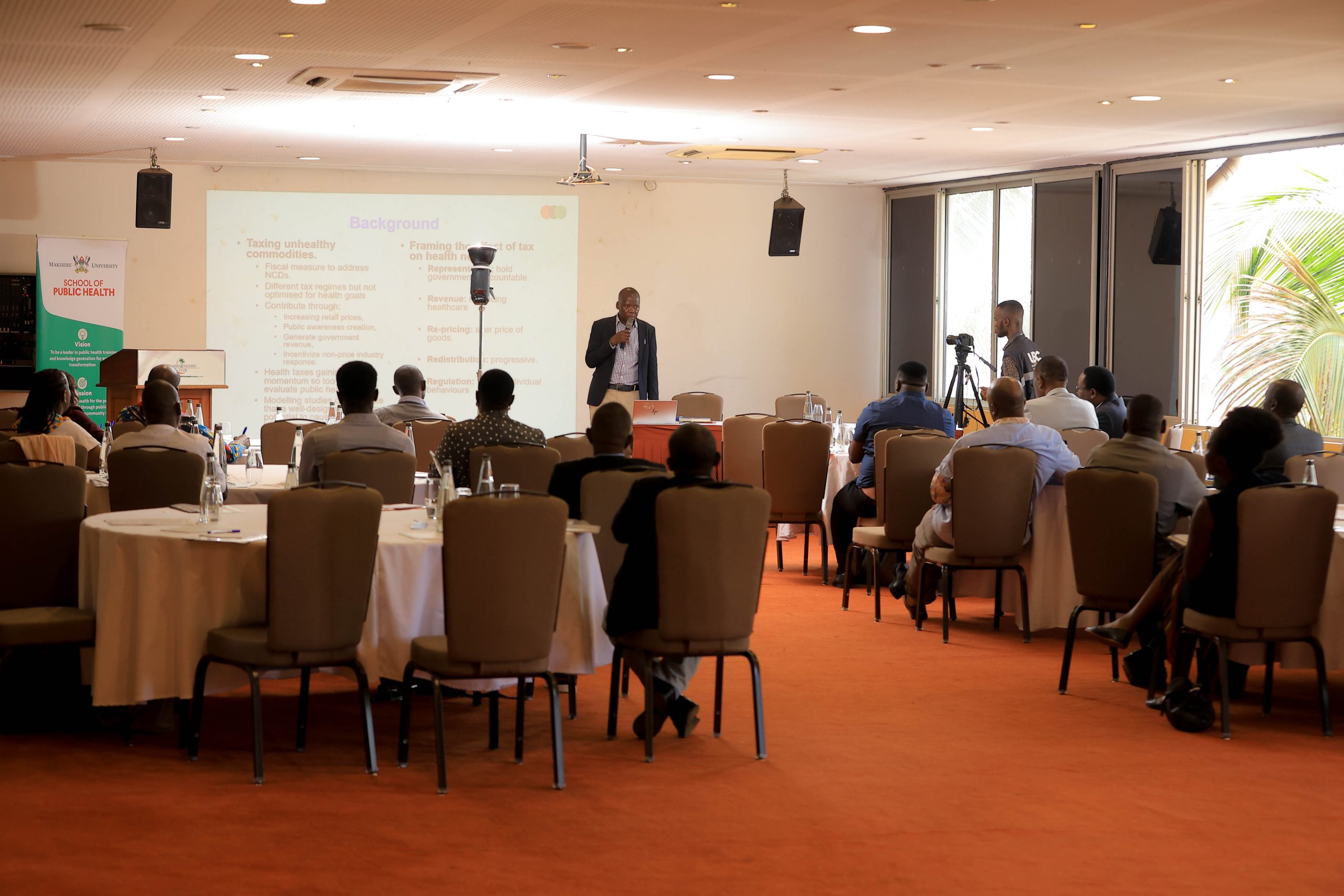
At a dissemination meeting on the political economy analysis of health taxes on unhealthy commodities in Uganda at Kabira Country Club in Kampala in late January this year, Dr. Ssengooba emphasized that, “When discussing NCDs, we need to be very practical.”
Adding that, “Currently, we rely heavily on a few donors and pharmaceutical companies, who provide us with a set of donated drugs each year. If these donors begin to reduce their support, similar to what we’re seeing with the US in the coming days, we will face even greater challenges. This is a critical issue: as we talk about NCDs, there’s no provision within the national budget to address medicine shortages. While there are healthcare professionals trained to manage these diseases, they may end up advising patients to purchase medicines from pharmacies—something that’s not affordable for many, especially those without financial means.”
The culprits? Cheap, sophisticated distribution channels and aggressively marketed unhealthy commodities. For instance, between 2015 and 2023, beer production rose by 42%, soft drinks by 67%, and cigarette sales surged despite taxes.
A presentation titled “Impact of Taxation on the Production, Sales, Revenue, and Consumption of Selected Unhealthy Commodities in Uganda: A Nine-Year Analysis” reveals a significant increase in the production of non-alcoholic beverages, particularly sugar-sweetened drinks, over the years. The highest production levels in the country were recorded during the 2022/2023 financial year. Richard Ssempala a Makerere University lecturer at the School of Economics and a current PhD candidate at Osaka Metropolitan University in Japan, who is also one of the researchers, attributes this growth to the rise in the number of factories and small-scale firms entering the market, coupled with low tax rates on these commodities.
Are Health Taxes, a “Best Buy,” Stalled by Competing Interests?
The World Health Organization (WHO) ranks health taxes on tobacco, alcohol, and sugary drinks among its top “Best Buys” to curb NCDs. Yet in Uganda, implementation faces fierce resistance. Dr. Henry Zakumumpa, a health systems and NCDs researcher at Makerere University, says industry lobbyists have impressed upon government technocrats, people, and commissioners at the Uganda Revenue Authority that when you increase taxes, then there will be distortion of the economy due to low consumption and the government won’t get those taxes, which he says is not true.

“When the taxes remain low, we as public health advocates realize that we shall not achieve our objective of reducing consumption of cigarettes and tobacco because they become affordable. Young people in secondary schools can afford cigarettes, which, of course, as we know, lead to cancer and heart disease. The tobacco industry is interested in maintaining taxes at a level where they’re ineffective, where they are so low that the prices are so low and young people can afford them,” said Dr. Zakumumpa.
But do health taxes work?
Studies that have been conducted elsewhere have shown that, when you increase taxes, the government increases revenue, and also the population reduces consumption of harmful products.
While the industry argues that taxes generate government revenue, a 2017 report by the Center for Tobacco Control in Africa (CTCA), based on a World Bank study, revealed that for every dollar the Ugandan government receives in tobacco taxes, it spends four dollars treating tobacco-related diseases. The government incurs costs at the Cancer Institute, Lung Institute, and Heart Institute, treating individuals with lung cancer, throat cancer, and heart disease linked to smoking in their youth.
“The industry has been successful in misinforming the public, even government officials, by scaring them that if they increase taxes, the economy will suffer and the government will lose revenue, which we have found is actually misinformation,” argues Dr. Zakumumpa.
Dr. Segujja explains, “Health taxes collide with national priorities like the industrialization growth trajectory that the government is pursuing and getting a bulk of the population from the subsistence to a cash economy. Manufacturers of alcohol, tobacco products, and sodas advance this as the rationale for their businesses and, along the way, were attracted to the country with tax incentives to contribute to this objective. Now, they argue new levies will kill jobs and take them out of business.” Industry lobbying has kept Uganda’s tobacco taxes at 30% of retail prices, far below WHO’s 70% recommendation.
The Chemical Hook
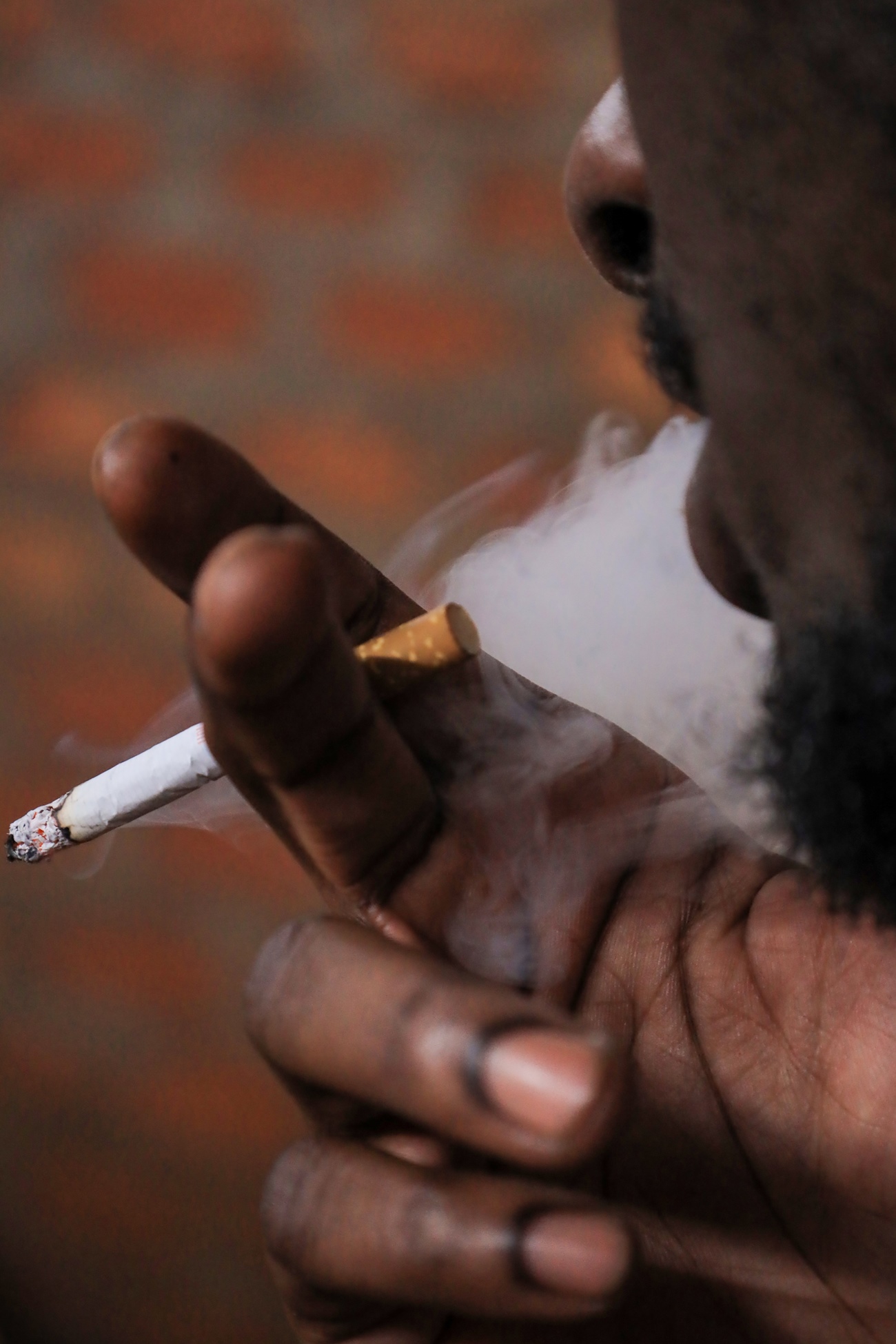
For the smokers, every puff injects their veins with 70 cancer-causing chemicals. Smoking doubles their risk of diabetes or that 90% of lung cancers trace back to this habit. But they know one thing: they can’t stop and this is how big tobacco engineers addiction in Uganda’s backyard
“Tobacco is one of the most addictive products,” explains Dr. Zakumumpa. “But do you know why? Manufacturers lace it with nicotine—a chemical trap designed to hook you for life.”

The irony is as bitter as the smoke. In rural Uganda, farmers have chewed raw tobacco leaves for generations without addiction. But in the hands of multinationals like British American Tobacco (BAT) and Marlboro, those same leaves are chemically altered. Nicotine, absent in natural foliage, is added like a sinister seasoning, transforming a plant into a predator.
Profitability of their businesses thrives through repeated consumption by a bulk of consumers.
“They want you as a tenant for life,” Dr. Zakumumpa says. “Even when your lungs scream, your wallet empties, or your blood sugar spikes. When the poor can’t afford cigarettes, they smoke less. The rich? They fund their own demise,” he adds notes.
But isn’t this the science of slavery?
Science demonstrates that nicotine is not only addictive, but also a master manipulator. It rewires brains to crave more, while tar and formaldehyde, some of the 7,000 chemical substances, carve silent graves in lungs. Yet Uganda’s tobacco taxes remain among the lowest globally, keeping packs accessible to teens.
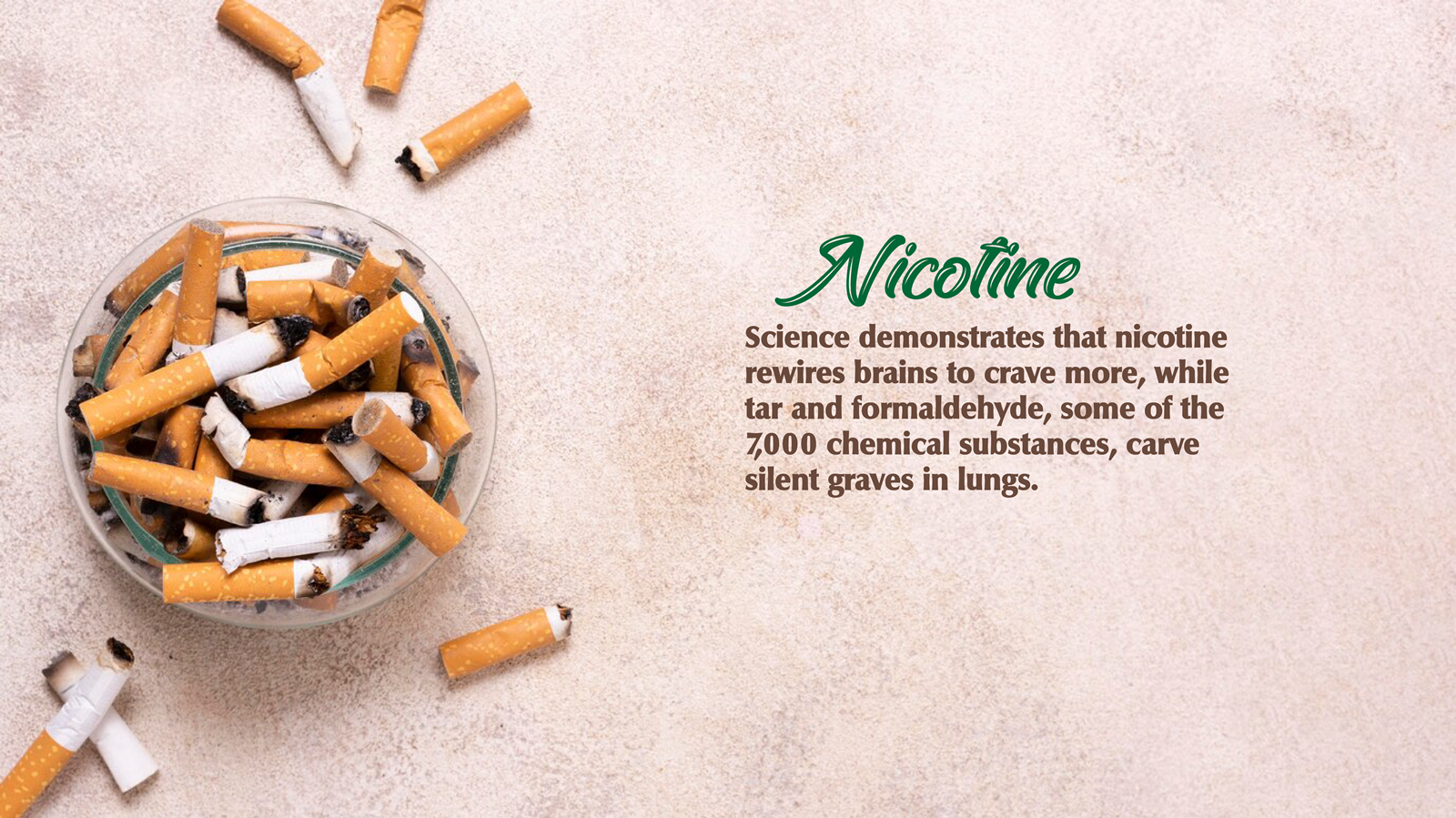
“This isn’t commerce,” Dr. Zakumumpa argues. “Its chemical warfare, and the casualties are in our wards, gasping for air.”
He advises those who are addicted to enroll in nicotine reduction therapies and healthcare treatment at centers designated to help people with tobacco addiction.
“There is something called the National Care Centre (NACARE); we have Serenity Centre Uganda. We have about five centers which treat people who have tobacco addiction and who want to leave tobacco because it’s a chemical addiction, so they should approach the School of Public Health, they can approach us researchers, we can link them to these centers and they will leave and drop this habit,” says Dr. Zakumumpa
Revenue vs. Health, the Fiscal Tightrope
Uganda’s dilemma mirrors a global challenge. While health taxes could reduce NCD risks and fund healthcare, policymakers fear economic fallout usually advanced by opponents of tax increases. “Taxes on unhealthy commodities are sensitive, fought against by companies”—acknowledges Ssempala. Yet data from his nine-year analysis demystified this: Production and sales of taxed goods like beer and sodas keep rising, even as revenues plateau. During COVID-19, sales dipped briefly but rebounded sharply.
The Ministry of Health’s Dr. Oyoo Charles Akiya remains pragmatic:
“We need compromise. If manufacturers won’t accept higher taxes, let’s mandate health warnings or limit marketing to children.”
Dr. Akiya is the Commissioner of Health Services-Non-Communicable Diseases, and he hopes there can be a path forward through coalitions, evidence, and political will. Despite hurdles, advocates see hope. South Africa’s success in taxing sugary drinks and Kenya’s tobacco levies offer blueprints.
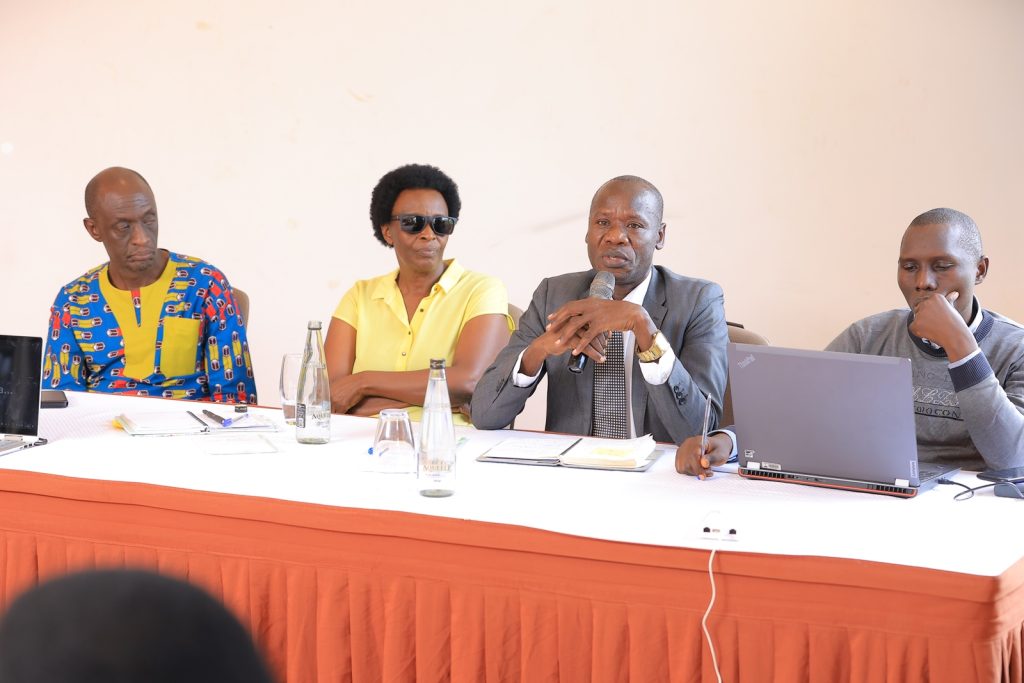
Regionally, a coalition of East African NCD managers is advocating for unified policies. The 4th Global NCD Alliance Forum, held at the Convention Centre in Kigali, Rwanda, on February 13, 2025, was the first of its kind in Sub-Saharan Africa. The event brought together 700 advocates, experts, and ministerial representatives from over 66 countries working in NCD prevention and care. This forum is a key global health forum as we race to the 4th UN High-level Meeting on NCDs, scheduled for September 2025 in New York.
“Change requires top-down pressure,” says Dr. Akiya.
With multinationals at the centre of manufacturing these commodities, exerting enormous pressure sometimes may prove difficult to confront as individual countries.
“We’re engaging the AU and UN to put NCDs on presidential agendas.” Locally, the Ministry of Health is mobilizing patients with lived experience: “They matter the most. The media plays a crucial role in this endeavor and holds significant importance for us. We cannot leave them out in these efforts. The leadership at the Ministry of Health, the minister, and the PS [Permanent Secretary] are all passionate about NCDs,” he added.
Is it a race against time or a behavioral issue?
As Uganda’s youth embrace processed snacks and tobacco, the clock ticks. “Every day without action, we lose more people to preventable diseases,” warns Professor Ssengooba.
The other day, Mubiru (not his real name) was jogging on the street, and a motorcycle taxi called Boda Boda knocked him, and he has just come out of the cast. He’s trying to manage NCDs; he got injured. At a Kampala hotel buffet, 28-year-old Miriam (not her real name) stares at her plate—a mountain of matoke, fried rice, boiled rice, vegetable rice, roasted gonja (plantain), and three golden potato wedges. “Finish it all,” her aunt insists. “Food is a blessing!” But Professor Ssengooba sees a different truth in these heaping portions: “Our plates have become battlegrounds. We pile carbohydrates like trophies—fried, boiled, mashed—while our bodies crumble.”
Uganda’s love affair with carbohydrates has turned toxic. Meals once centered on balanced staples like beans and greens now drown in oil and starch. “We’ve confused ‘tasty’ with ‘excessive,’” he says, adding that “at weddings, funerals, and even home dinners, its six carbohydrates competing on one plate. Why? Tradition says ‘more is generous.’ Science says, ‘more is deadly.’”

At what cost? Surging diabetes and hypertension rates. “We’re eating our way into clinics,” he warns. Yet change faces cultural roadblocks: How do you convince a nation that less on the plate isn’t disrespect—but survival? In this high-stakes battle between public health and profit, Uganda’s choices will shape a generation’s survival.
Davidson Ndyabahika is the Communications Officer, Makerere University School of Public Health.

You may like
-


EfD Uganda Marks 2025 Milestones, Sets Strategic Path for 2025–2029
-


Makerere University and Tsinghua University Launch Landmark China–Uganda Joint Laboratory on Natural Disaster Monitoring and Early Warning
-


Facilitating Access and Participation through Higher Education Access Programmes and Connected Education for Students with Refugee Backgrounds: A Global South Delphi Study
-


VC Flags off 220 Strong Contingent to 20th AUUS Games
-
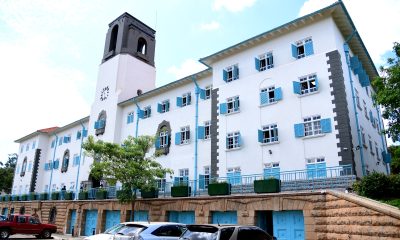

US$ 162m KEXIM Loan Approval Timely for Makerere University
-


Makerere University Explores Strategic Partnership with Tsinghua University in Safety Science, Disaster Resilience and Public Health
Health
Makerere University and Tsinghua University Launch Landmark China–Uganda Joint Laboratory on Natural Disaster Monitoring and Early Warning
Published
3 days agoon
December 19, 2025
Makerere University has taken a decisive step in strengthening Uganda’s and Africa’s capacity for public safety, disaster preparedness, and climate resilience with the official launch of the China–Uganda Belt and Road Joint Laboratory on Natural Disaster Monitoring and Early Warning, a flagship collaboration with Tsinghua University of China.
Launched during the Makerere University–Tsinghua University Symposium on Public Safety and Natural Disaster Management, the Joint Laboratory positions Makerere as a continental hub for cutting-edge research, innovation, and policy-relevant solutions in disaster risk reduction, early warning systems, and emergency response. The Laboratory will be hosted by Makerere University and is the only facility of its kind in Africa under this cooperation framework, underscoring its regional and global significance.
A Strategic Partnership Rooted in Research, Policy, and Practice
In his opening remarks, Prof. Barnabas Nawangwe, Vice-Chancellor of Makerere University and Ugandan Co-Director of the Joint Laboratory, traced the origins of the partnership to 2018, when a Makerere delegation visited Tsinghua University and the Hefei Institute for Public Safety Research. He recalled being deeply impressed by China’s advanced capacity in public safety research, disaster monitoring, and emergency management capabilities that directly respond to Uganda’s growing exposure to floods, landslides, epidemics, and other hazards.
The Vice-Chancellor noted that the successful establishment of the Joint Laboratory followed a competitive grant process under China’s Belt and Road Initiative, supported by the Government of Uganda and regional partners, including Nigeria and Côte d’Ivoire. He emphasized that the Laboratory aligns squarely with Makerere’s strategic ambition to become a research-led and research-intensive university, while also advancing its internationalisation agenda.

“This Laboratory will significantly enhance Makerere University’s ability to generate evidence-based research that directly informs government policy and public safety interventions. It will serve not only Uganda, but Africa at large,” Prof. Nawangwe said.
He further underscored the Laboratory’s national importance, noting that similar facilities in China are regarded as national-level laboratories, entrusted with supporting government decision-making and national resilience. Relevant Ugandan institutions, including the Office of the Prime Minister (OPM), UPDF, Uganda Police, Ministry of Health, and humanitarian actors, are expected to actively participate in the Laboratory’s work.
Tsinghua University: Advancing Science Diplomacy and South–South Cooperation
Speaking on behalf of Tsinghua University, Prof. Yuan Hongyong, Dean of the Hefei Institute for Public Safety Research and Chinese Co-Director of the Joint Laboratory, described the initiative as both a scientific milestone and a powerful demonstration of South–South cooperation.
He emphasized that natural disasters transcend national borders and demand collective, science-driven responses. By combining Tsinghua’s technological expertise, including satellite monitoring, AI-driven analytics, and integrated early warning systems, with Makerere’s deep regional knowledge and policy engagement, the Joint Laboratory provides a robust platform for innovation, applied research, and practical solutions tailored to African contexts.

The Laboratory will function not only as a research centre, but also as an operational platform for natural hazard monitoring, early warning, risk assessment, and capacity building, supporting Uganda and the wider African region in building more resilient communities.
Government of Uganda: Research as a Pillar of National Resilience
Representing the Office of the Prime Minister, Mr Frederick Edward Walugemba, reaffirmed the government’s strong support for the Joint Laboratory, recognizing research as a cornerstone of effective public safety and disaster management. The OPM highlighted its constitutional mandate to coordinate disaster preparedness and response through institutions such as the National Emergency Coordination and Operations Centre (NECOC).
He mentioned that the Office of the Prime Minister is committed to working closely with Makerere University and its partners, underscoring the importance of multi-agency collaboration, robust data systems, and timely policy advisories to address the complex, multidimensional nature of public safety challenges.
China–Uganda Relations and the Role of Science Diplomacy
Mr. WANG Jianxun, Commercial Counsellor of the Embassy of the People’s Republic of China in Uganda, lauded the Joint Laboratory as a concrete outcome of the growing China–Uganda Comprehensive Strategic Partnership. He emphasized that the collaboration reflects China’s commitment to knowledge sharing, technology transfer, and people-centred development, particularly in areas such as climate adaptation, disaster risk reduction, and sustainable development.
He also highlighted the Belt and Road Initiative as a framework that extends beyond infrastructure to include scientific cooperation, academic exchange, and innovation-driven development, with the Joint Laboratory standing as a model of how universities can advance diplomacy through science.
Makerere’s Multidisciplinary Strength at the Core
In his concluding remarks, Prof. Nawangwe reaffirmed Makerere University’s readiness to operationalize the Laboratory through a multidisciplinary research team spanning public health, geography, engineering, computing, artificial intelligence, social sciences, and the built environment.
He stressed that effective disaster management must integrate technology, human behaviour, governance, and community engagement, noting the importance of sociological insights in addressing risk perception and public compliance during disasters. Makerere will also engage emerging universities and regional partners to ensure the Laboratory’s benefits are widely shared.

The Vice-Chancellor also commissioned an interim, multidisciplinary coordination committee to operationalise the Joint Laboratory, drawing expertise from health, climate science, engineering, artificial intelligence, social sciences, and government agencies.
Hon. John Chrysostom Muyingo Officially Launches the Laboratory
The Joint Laboratory was officially launched by the Honourable John Chrysostom Muyingo, Minister of State for Higher Education, who applauded Makerere University and Tsinghua University for securing the prestigious grant and advancing Uganda’s science and research agenda.

Hon. Muyingo reaffirmed the Government’s commitment to supporting research that informs national development, public safety, and disaster preparedness. He urged Ugandan researchers to fully leverage the partnership to learn from China’s experience in transforming research into actionable solutions for society.
“This Laboratory is a clear demonstration of how strategic international partnerships can strengthen national capacity, inform policy, and protect lives,” the Minister said, as he formally declared the symposium and laboratory launch open.
Positioning Makerere as a Regional Centre of Excellence
Makerere University already plays a critical role in public safety, disaster preparedness, and early warning through a range of research, training, and operational partnerships. Through the School of Public Health (MakSPH) and the Infectious Diseases Institute (IDI), the University has led national and regional initiatives in epidemic preparedness, emergency response, and early warning, including Field Epidemiology Training, risk prediction modelling, and multi-hazard risk assessments that inform district and national preparedness planning. A national assessment of 716 health facilities conducted by MakSPH revealed widespread exposure to climate-related hazards and systemic preparedness gaps, directly informing the Ministry of Health’s Climate and Health National Adaptation Plan (H-NAP 2025–2030)
Makerere has also been at the forefront of disaster risk reduction innovation and community resilience through the Resilient Africa Network (RAN), which has supported scalable, evidence-based solutions such as EpiTent, a rapidly deployable emergency health facility; RootIO, a community-based radio communication platform used for risk communication and early warning; and RIAP Horn of Africa, which advances climate-resilient water harvesting technologies for drought-prone pastoralist communities.

Earlier, the University led the USAID-funded PeriPeri U project (2014–2019) and a disaster management collaboration with Tulane University, strengthening applied research, training, and early warning systems across Africa, efforts that laid the foundation for RAN and Makerere’s current disaster resilience agenda.
In collaboration with government and international partners, Makerere has supported the strengthening of Emergency Operations Centres, including the development of Regional Emergency Operations Centre (REOC) dashboards to improve real-time coordination and situational awareness. IDI has further contributed to epidemic intelligence and early warning, supporting districts to update WHO STAR-based risk calendars, strengthen sub-national preparedness, and enhance real-time decision-making during outbreaks. Makerere teams have also been deployed regionally to support Marburg and Mpox outbreak responses in Rwanda and the DRC, while advancing outbreak modelling as an early warning tool for high-consequence infectious diseases.
Complementing these efforts, the Department of Geography, Geo-Informatics and Climatic Sciences conducts transdisciplinary research on floods, landslides, droughts, soil erosion, and land-use change, using geospatial analysis, earth observation, modelling, and participatory methods to translate complex data into actionable early warning and risk information for policymakers and communities. These ongoing initiatives collectively demonstrate Makerere University’s established capacity in public safety, disaster preparedness, and early warning, providing a strong operational and scientific foundation for the China–Uganda Belt and Road Joint Laboratory.
With strong backing from the Governments of Uganda and China, as well as leading international partners, the China–Uganda Belt and Road Joint Laboratory on Natural Disaster Monitoring and Early Warning is poised to become a regional centre of excellence for disaster risk reduction research, training, and innovation.
The Laboratory will contribute to improved early warning systems, faster emergency response, stronger policy coordination, and enhanced scientific capacity, cementing Makerere University’s role at the forefront of addressing some of the most pressing public safety challenges facing Uganda, Africa, and the global community.
Caroline Kainomugisha is the Communications Officer, Advancement Office Makerere University.
Health
Makerere University Explores Strategic Partnership with Tsinghua University in Safety Science, Disaster Resilience and Public Health
Published
6 days agoon
December 16, 2025
Makerere University has taken a significant step toward strengthening global research collaboration following a high-level meeting between Vice Chancellor Prof. Barnabas Nawangwe and a delegation from Tsinghua University’s Hefei Institute for Public Safety Research, one of China’s leading centres of excellence in disaster prevention, public safety, and emergency management. The engagement marked a renewed commitment to advancing scientific cooperation between the two institutions, particularly in addressing complex environmental and public health challenges that continue to shape national and global development.
A Partnership Anchored in Shared Challenges and Global Priorities
In his remarks, Prof. Nawangwe emphasized that the concept of comprehensive public safety, spanning natural disasters, epidemics, infrastructure failures, and social risks, is increasingly relevant to all colleges and disciplines at Makerere. Uganda’s experience with epidemics such as Ebola, cholera, and COVID-19; frequent landslides in mountainous regions; flooding events; and rising traffic-related incidents place the University in a unique position to contribute applied research, community-based insights, and local knowledge to a global scientific dialogue.
He noted that the Tsinghua presentation revealed new areas of alignment, particularly in epidemic modelling, early-warning systems, and integrated emergency management, areas where Makerere’s public health scientists, medical researchers, and social scientists have extensive expertise.
“This collaboration offers meaningful opportunities for nearly every college at Makerere,” he noted. “Public safety touches the environment, public health, engineering, social sciences, ICT, humanities, and urban planning. The challenges we face as a country make this partnership both timely and essential.” Prof. Barnabas Nawangwe noted.
Tsinghua University: A Global Leader in Comprehensive Public Safety.
The delegation from Tsinghua University outlined China’s national investment in Public safety over the past two decades, an effort driven by the recognition that life and security are the foundation of sustainable development. Tsinghua’s Hefei Institute for Public Safety Research has developed nationally recognised research platforms and large-scale simulation facilities dedicated to Natural disaster modelling (earthquakes, landslides, floods, typhoons, Infrastructure and urban systems safety, Public health emergencies and epidemic preparedness, Early-warning, monitoring, and emergency communication, Traffic and transportation safety, Post-disaster reconstruction and resilience planning.

Their systems currently support over 100 provincial and municipal emergency management centres in China, underscoring their global leadership in practical, scalable solutions for disaster risk management. The delegation reaffirmed that Uganda’s lived experience with multiple hazards presents opportunities for meaningful knowledge exchange. They expressed particular interest in learning from Makerere’s work on epidemic response, community health systems, and the social dimensions of disaster management.
Emerging Areas of Partnership
The meeting identified several promising pathways for long-term collaboration:
1. Joint Research in Disaster Risk Reduction and Climate-Related Hazards
Both institutions expressed readiness to co-develop research projects on landslides, floods, urban resilience, and multi-hazard modelling, drawing on Tsinghua’s advanced simulation technologies and Makerere’s environmental expertise and geographic field realities.
2. Public Health Emergency Preparedness and Epidemic Response
Makerere’s renowned public health schools and research centres will collaborate with Tsinghua on epidemic prediction, early-warning systems, and integrated preparedness frameworks, leveraging Uganda’s decades of experience managing high-risk disease outbreaks.

3. Infrastructure and Urban Safety, Including Traffic Systems
With Uganda experiencing rapid urbanisation and high rates of motorcycle-related road incidents, Tsinghua shared insights from China’s own transformation, including infrastructure redesign, transport modelling, and public transit innovations. Collaborative work in this area would support city planning and road safety interventions in Kampala and other urban centres.
4. Academic Exchange and Capacity Building
Both sides expressed interest in student exchanges, staff mobility, co-supervision of postgraduate research, and specialised training programmes hosted at Tsinghua’s world-class safety research facilities.
5. Development of a Joint Public Safety Laboratory at Makerere
The institutions are exploring the establishment of a collaborative safety research platform in Uganda. This initiative could serve as a regional hub for innovation in emergency management, environmental safety, and technology-driven risk assessment.
Towards a Long-Term, Impactful Collaboration
The meeting concluded with a shared commitment to develop a structured partnership framework in the coming months, supported by both universities and aligned with Uganda–China cooperation priorities. Both teams acknowledged that the partnership must yield tangible results that enhance community resilience, bolster national preparedness systems, and foster scientific capacity for future generations.
Prof. Nawangwe commended Tsinghua University for its willingness to co-invest in research and capacity building, noting that such collaborations position Makerere not only as a leading research institution in Africa but as an active contributor to global scientific progress.

“This partnership has the potential to transform our understanding of the science of public safety to deliver solutions that safeguard lives.” Prof. Barnabas Nawangwe noted.
“It aligns perfectly with Makerere’s mission to be a research-led, innovation-driven university responding to the world’s most urgent challenges.” He added.
As part of this strategic partnership engagement, Makerere University will, on Wednesday, 17th December, co-host the Makerere University–Tsinghua University Symposium on Public Safety and Natural Disaster Management. The symposium will run from 8:00 AM to 2:00 PM in the University Main Hall, Main Building.
This symposium represents a deepening of collaboration not only between Makerere University and Tsinghua University, but also a broader strategic partnership between Uganda and the People’s Republic of China.
During the event, H.E. Zhang Lizhong, Ambassador of the People’s Republic of China to Uganda, together with the State Minister for Higher Education, Government of Uganda, will officially launch the China–Uganda Belt and Road Joint Laboratory on Natural Disaster Monitoring and Early Warning. The Laboratory will be hosted at Makerere University, positioning the University to play a central role in strengthening Uganda’s and the region’s capacity for natural disaster preparedness, public safety, and emergency management research.
Caroline Kainomugisha is the Communications Officer, Advancement Office, Makerere University.
Health
Three Years of Impact: Makerere University Health User Committee Presents Status Report
Published
1 week agoon
December 12, 2025By
Eve Nakyanzi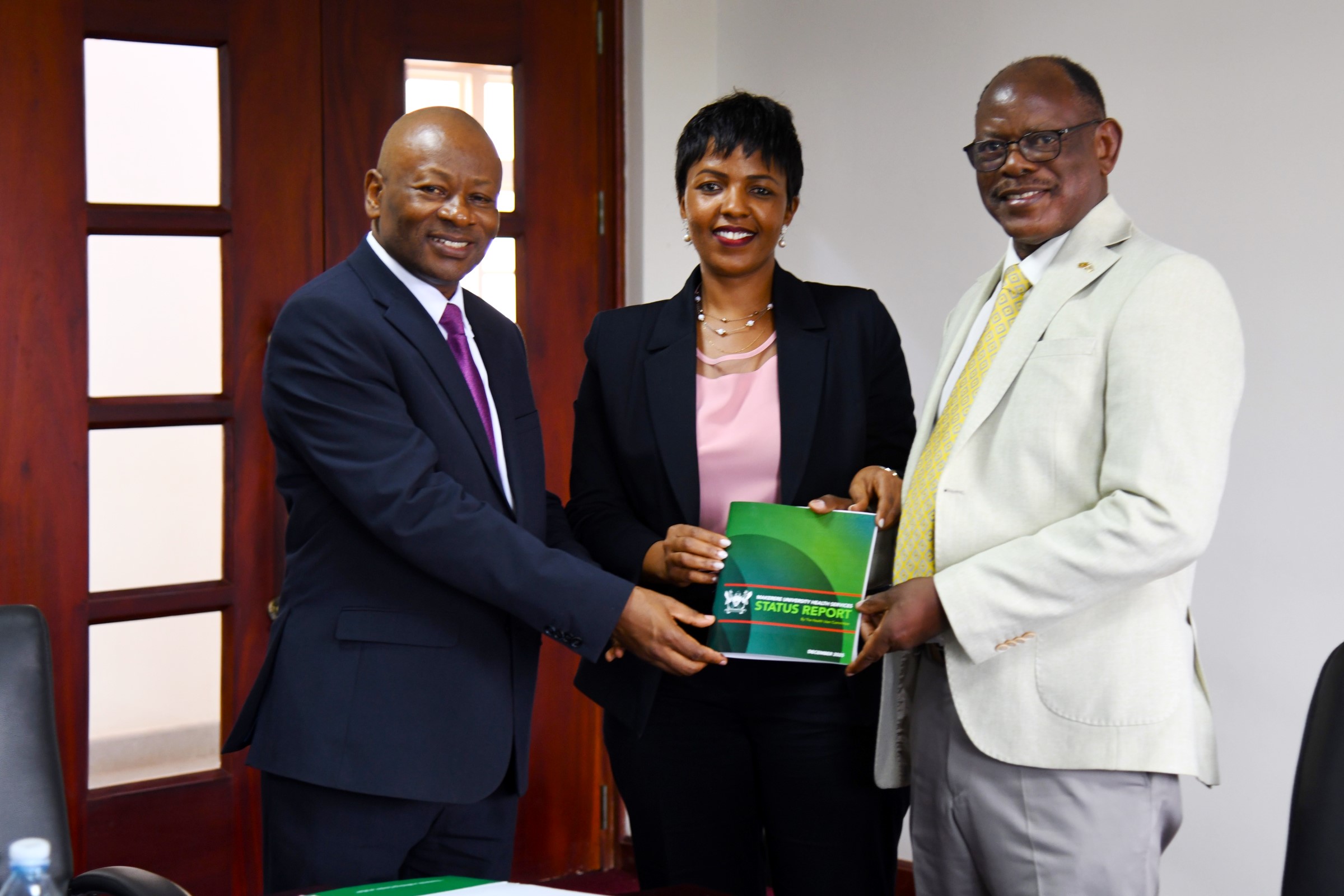
Makerere University on 11th November 2025 marked a significant milestone as the Health User Committee (Mak-HUC)—established by the Vice Chancellor in 2022 as part of his strategic mandate to strengthen and oversee the University’s health service delivery—formally handed over its three-year report. The event highlighted the committee’s achievements in guiding, monitoring, and improving Makerere University Health Services, presenting a record of progress that has reshaped confidence, strengthened systems, and expanded care for staff and students.
A Call for Integrated and Sustainable Health Services
The Vice Chancellor Prof. Barnabas Nawangwe emphasized the need for a more integrated, efficient, and sustainable approach to delivering health services for Makerere University staff and students. He noted that while the University does not receive supplies from the National Medical Stores system, its community remains entitled to quality care, urging renewed consideration of how essential services—such as drug access, surgical limits, and special medical cases—can be better supported. He highlighted the importance of practical costing models, especially for extending care to staff dependents, and called for flexibility in managing exceptional cases like complex surgeries or referrals abroad.
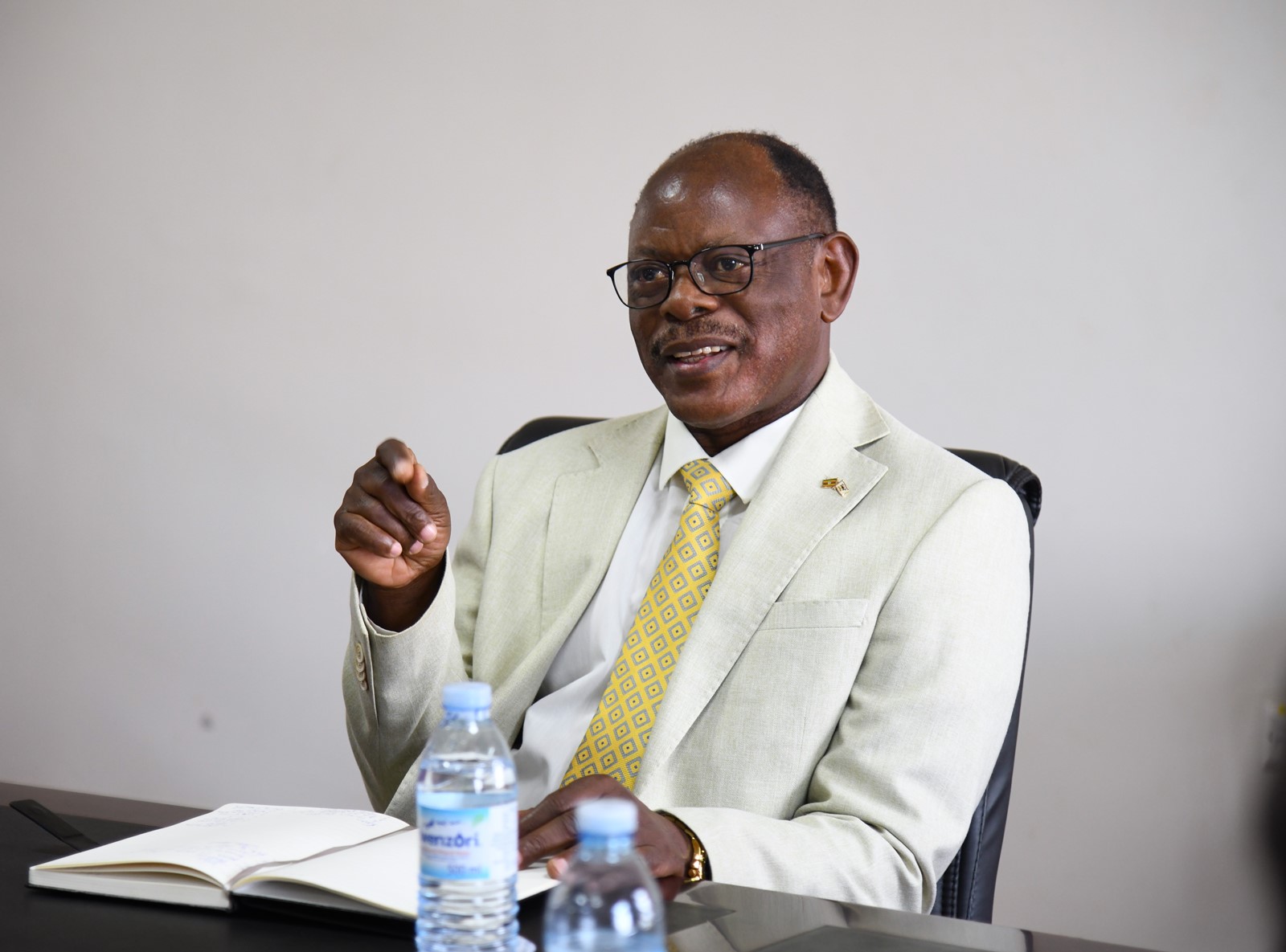
The Vice Chancellor also underscored the urgent need to modernize the University Hospital, proposing that Makerere begin incrementally establishing a teaching hospital using existing facilities and leveraging expertise of highly qualified consultants the College of Health Sciences (CHS). He reiterated that government budget ceilings remain a major constraint, but encouraged the committee to develop a concept that could be presented to Council and later supported through strategic engagement with the Ministry of Finance, Planning and Economic Development. Throughout his remarks, he applauded the Mak-HUC for its work and reaffirmed that even with the creation of a professional hospital board, the committee must remain central in representing service users.
Aligning Health Services with Sustainable Insurance Models
Prof. Bruce Kirenga the Principal College of Health Sciences responded by clarifying the committee’s efforts to align Makerere’s health services with real insurance models, including cost projections for covering additional family members and encouraging voluntary staff contributions where necessary. He acknowledged the complexity of expanding service coverage—especially in cases of chronic illness or high-cost procedures—but emphasized the committee’s commitment to cautious, sustainable planning. He confirmed that the College is working closely with the Hospital to improve services, attract specialists, and integrate students into the health system, a model that naturally draws academic staff into clinical roles without imposing unrealistic obligations.
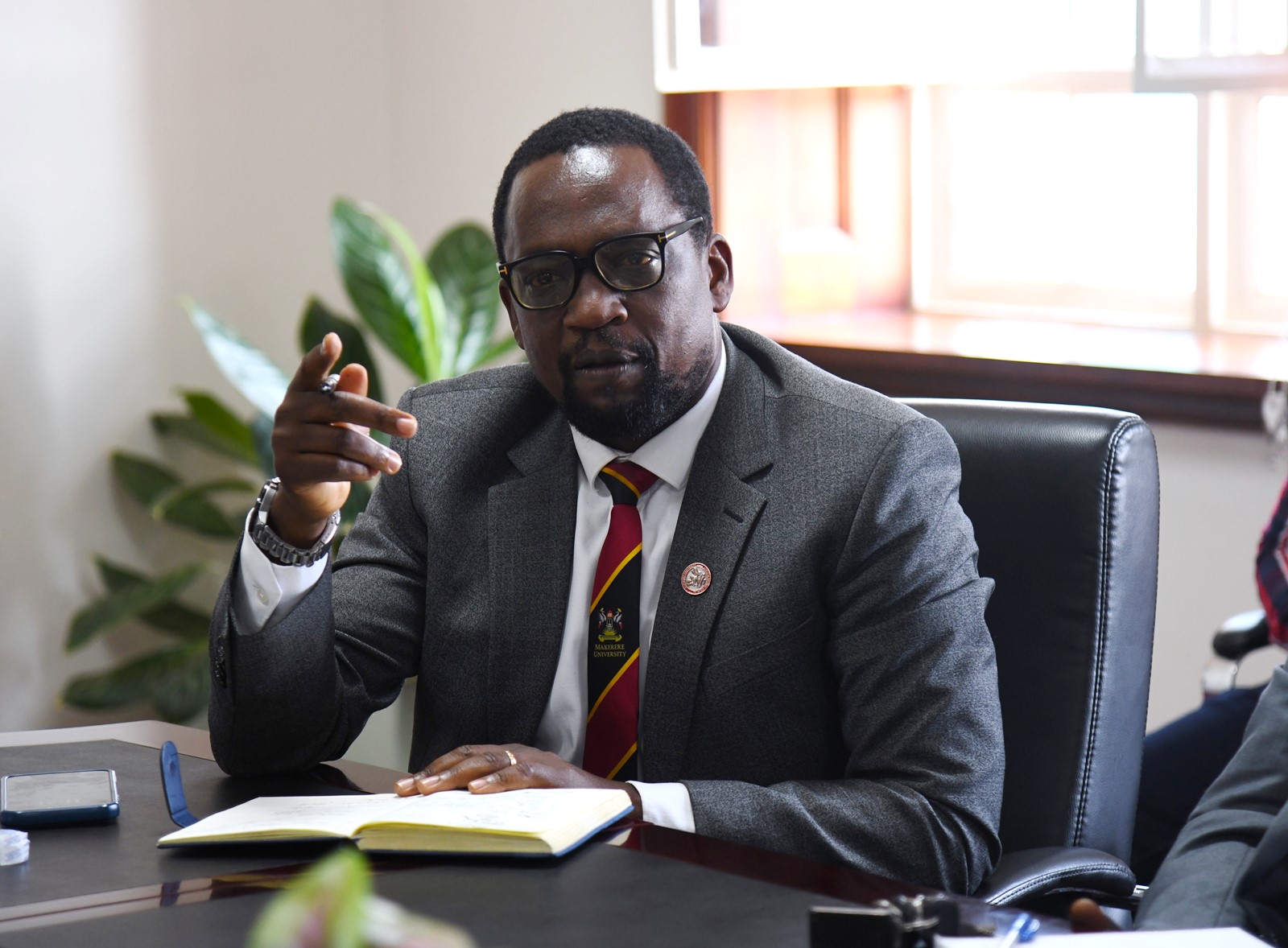
Prof. Kirenga also noted the College’s ongoing assessments of facility needs, including dialysis, ICU expansion, and equipment placement, stressing that the ultimate goal is a unified, well-structured health network across the University. He welcomed the Vice Chancellor’s support for transforming existing facilities into a teaching hospital and pledged to refine proposals that reflect both current realities and long-term institutional needs.
Committee Chair Reflects on Three-Year Achievements
Dr. Allen Kabagyenyi, Chair of Mak-HUC, reflected on the three-year journey with gratitude and pride, noting that the committee not only fulfilled its terms of reference but exceeded expectations. She highlighted major gains made under the Vice Chancellor’s support, including transforming the University Hospital into a self-accounting unit—an intervention that unlocked smoother financial management and accelerated service delivery. Dr. Kabagyenyi commended the strong collaboration with the Hospital administration, Human Resources Directorate, and other units, which ensured staffing stability even during institutional transitions.

She pointed to the expansion of referral partnerships—now totaling 29 health facilities nationwide—as a crucial achievement that guarantees continuity of care for staff and students wherever they are. She also emphasized the committee’s work in guiding policies for specialized treatment and cross-border care, strengthening fraud-prevention systems, and advancing digital transformation through an integrated health information system and the new Makerere University Health Services (MakHS) website. Dr. Kabagyenyi noted that these improvements have directly benefited staff and enhanced the overall quality of care, supported by close collaboration with the College of Health Sciences and access to some of the country’s best consultants. She concluded by underscoring the ongoing need for a comprehensive University Health Policy and expressed deep appreciation to the Vice Chancellor and University Management for their unwavering openness and support—attributes she credited for the committee’s success.
Highlights of Service Growth and Infrastructure Upgrades
The Chief, Makerere University Health Services, Prof. Josaphat Byamugisha, highlighted the significant progress achieved under the Health User Committee’s oversight, noting especially the steady rise in service utilization and renewed confidence among staff and students. He emphasized that trust in the University Hospital has grown organically—built not through advertising, but through improved patient experience, stronger systems, and word of mouth.

Prof. Byamugisha pointed to major achievements such as expanded Out-Patient Department (OPD) attendance, better student access to care, enhanced infrastructure including modernized theatres capable of complex procedures, and upgraded laboratories supported through framework agreements that ensure continuous equipment renewal. He noted that specialized clinics, increased inpatient capacity, and expanded referral networks have strengthened the Hospital’s reach and responsiveness. The Hospital is also taking on more research work and clinical training, partnering with units such as optometry, internal medicine, and the Clinical Trials Unit, with new collaborations—like the MasterCard Foundation—driving further growth.
He reaffirmed that the long-term vision of establishing a fully-fledged Makerere University Teaching Hospital is taking shape through coordinated efforts with the College of Health Sciences. Prof. Byamugisha credited the Vice Chancellor’s support for enabling these strides and expressed deep appreciation to all stakeholders contributing to the continued improvement of health services for the entire University community.
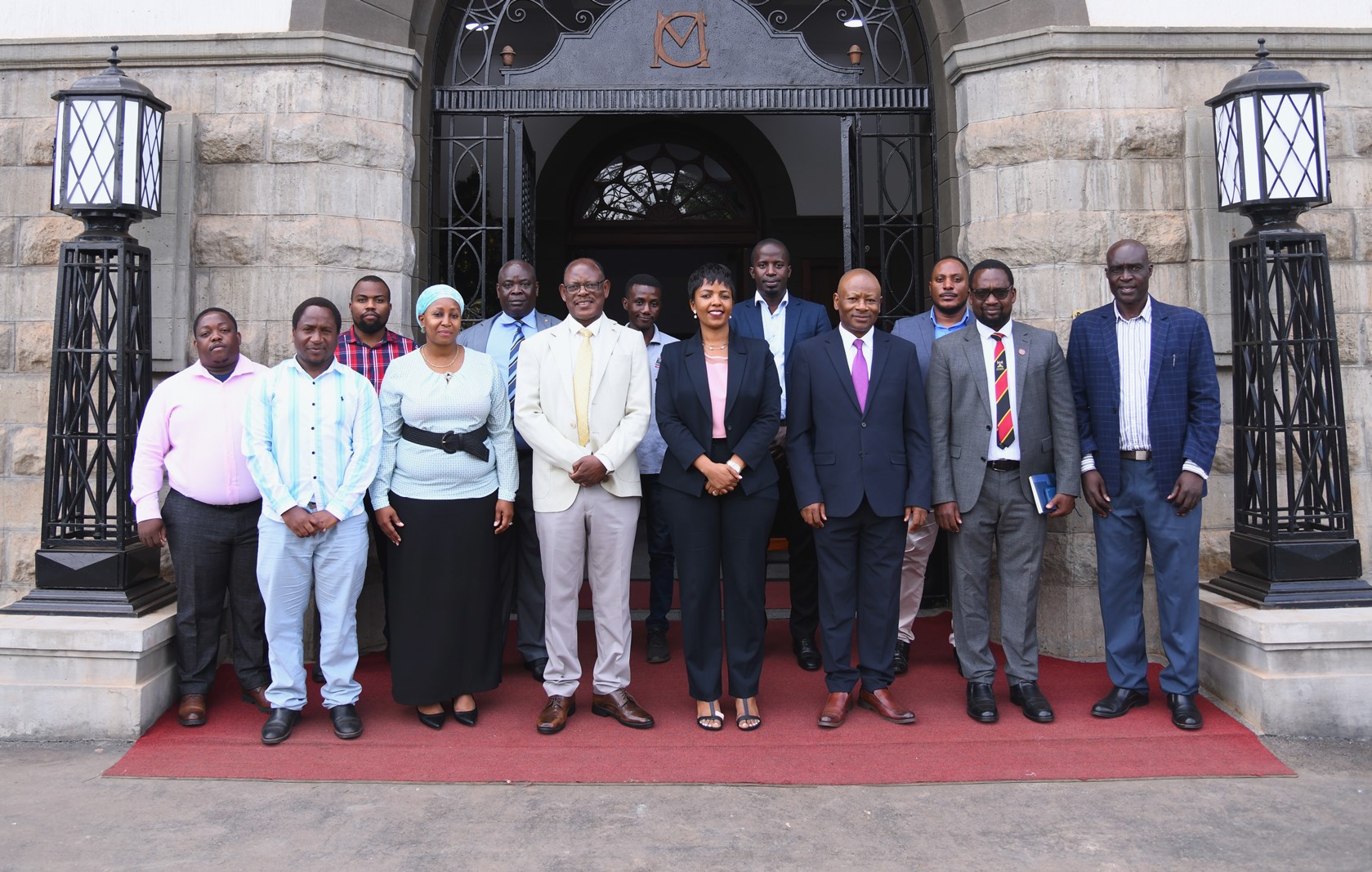
DICTS Unveils Modular Information System & Health Services Website
The Directorate for ICT Support (DICTS) presented the newly developed Makerere University Integrated Health Management Information System (MakIHMIS), designed around a modular system that streamlines all hospital processes. The platform integrates eight functional modules, including registration, triage, clinician workflows, inventory and medicines management, pharmacy dispensing, laboratory information management, user management, and linkages to both the Academic and Human Resource Management Information Systems ACMIS and e-HRMS respetively. Most of these modules are already active, enabling smooth patient registration, accurate record-keeping, real-time inventory tracking, and seamless access to student and staff data without duplication. Only two modules—land and insurance—remain under development before the system becomes fully end-to-end. The MakHS website on the other hand features information about hospital services, events, research activities, and staff profiles, offering both the university community and the public a centralized and efficient digital gateway to the hospital’s operations.

The term of the outgoing committee has officially concluded, and preparations are now underway for the incoming committee to assume its duties and continue advancing the work ahead.
Trending
-

 Research3 days ago
Research3 days agoMakerere University Launches Knowledge-Sharing Platform to Drive Innovation and Economic Growth
-

 General5 days ago
General5 days agoMakerere University Leaders Call for Excellence in Research and Supervision as Academic Staff and PhD Students Receive Certificates
-

 Humanities & Social Sciences1 week ago
Humanities & Social Sciences1 week agoCollege of Humanities and Social Sciences Launches Five Groundbreaking Publications
-
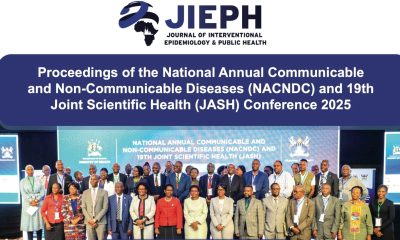
 Health2 weeks ago
Health2 weeks agoProceedings of the National Annual Communicable and Non-Communicable Diseases and 19th Joint Scientific Health Conference 2025
-

 Health2 weeks ago
Health2 weeks agoInside Uganda’s Silent AMR Crisis: Counterfeit Drugs, Antibiotic Overuse, and What Wakiso’s Evidence Reveals